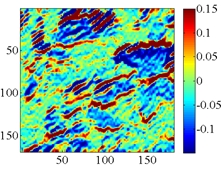Influence of hydric solicitations on the morphological behavior of hemp concrete
DOI:
https://doi.org/10.21809/rilemtechlett.2019.80Keywords:
hemp concrete, microstructure, digital image correlation, adsorption, strainAbstract
The use of bio-based materials such as hemp concrete in the field of construction allows limiting environmental impacts and improving the energy performances of buildings. The aim of this paper is to understand the influence of adsorption and desorption of moisture in hemp concrete on its internal morphology and its dimensional variations. That’s why, the high porosity and the adsorption capacity of hemp concrete were discussed. Then, an experimental cell was developed to follow the geometric evolution over time of hemp concrete microstructure under hydric solicitations: humidification and drying. The digital image correlation was used to determine the strains fields on the surface of the material. This technique showed the behavior of this hygroscopic material subjected to different hygrometries. Indeed, the hemp shiv undergoes larger strains than the binder, thus affecting the morphology of hemp concrete. The results obtained highlighted the influence of the hydric state of hemp concrete on its very heterogeneous microstructure. It has also been revealed that the durability of the material can be affected by the dimensional variations caused by the relative humidity variations.

Downloads
Published
How to Cite
Issue
Section
License
Authors retain copyright of the articles published in RILEM Technical Letters and grant the journal the right of first publication with open access. The work is simultaneously licensed under Creative Commons Attribution 4.0 International License (CC BY 4.0) that allows others to share and adapt the work under the following terms: 1) a proper attribution is given in a form of bibliographic record with the DOI link directing to RILEM Technical Letters; 2) a link to the license is provided; 3) the changes (if any) are indicated.









